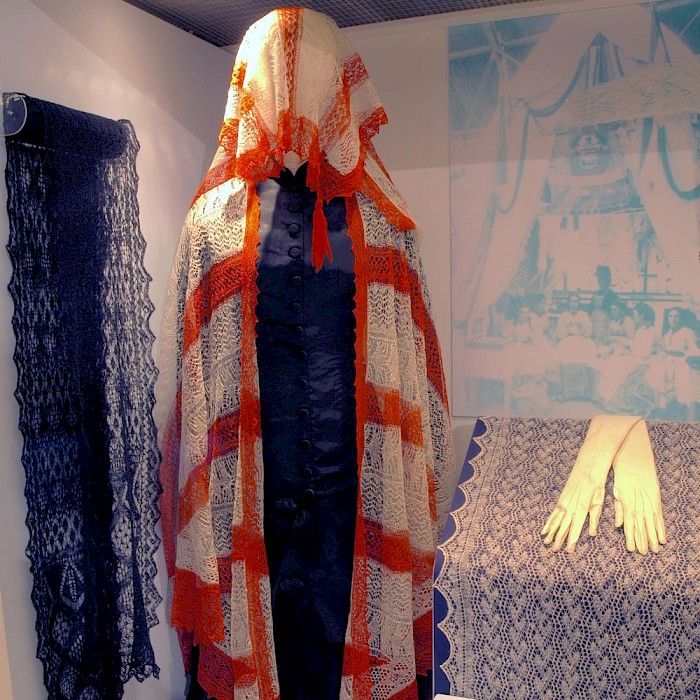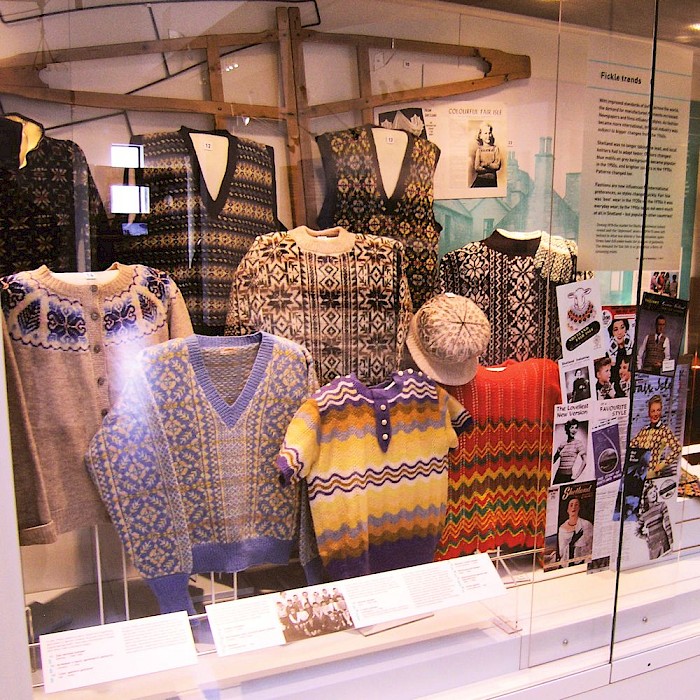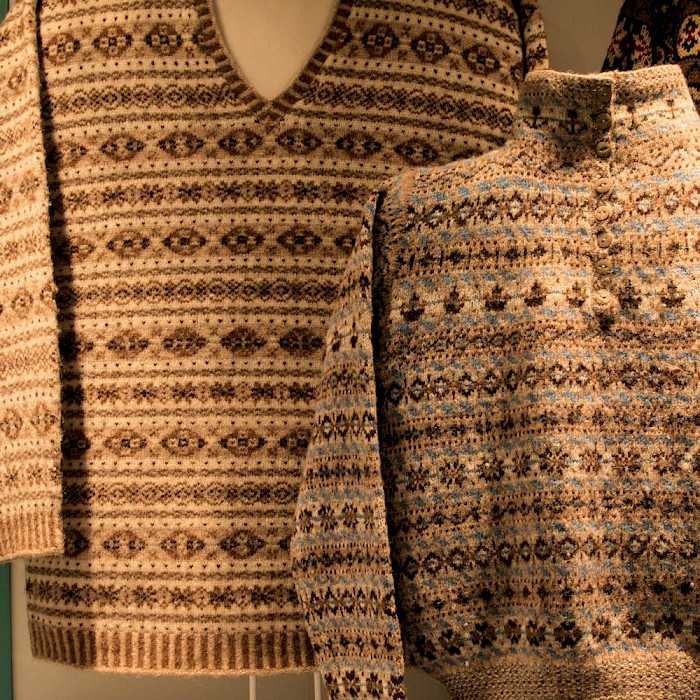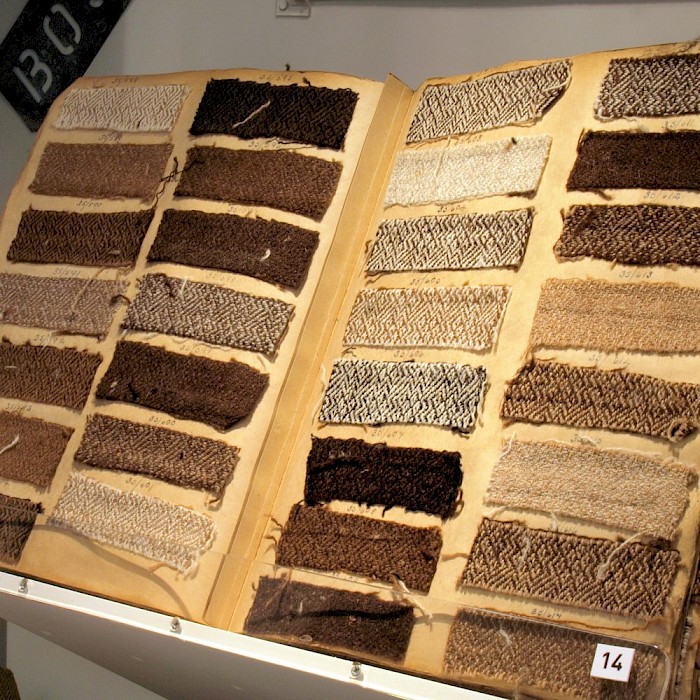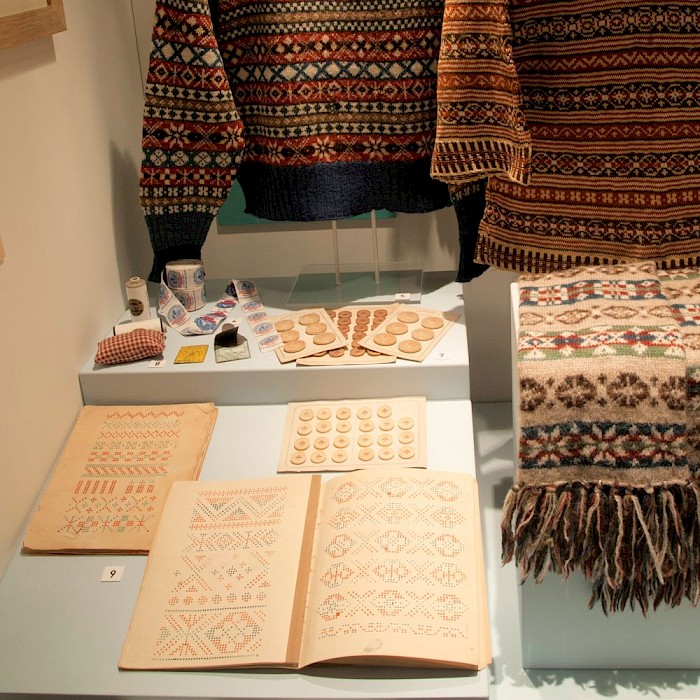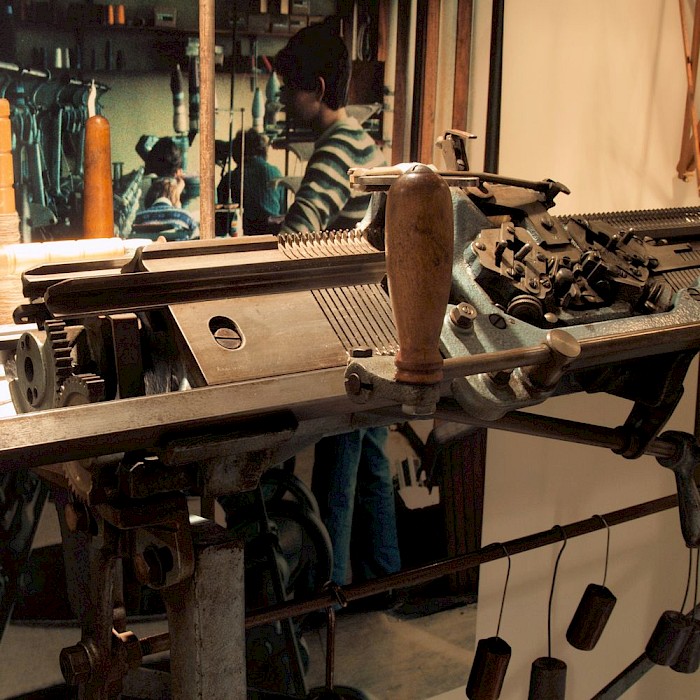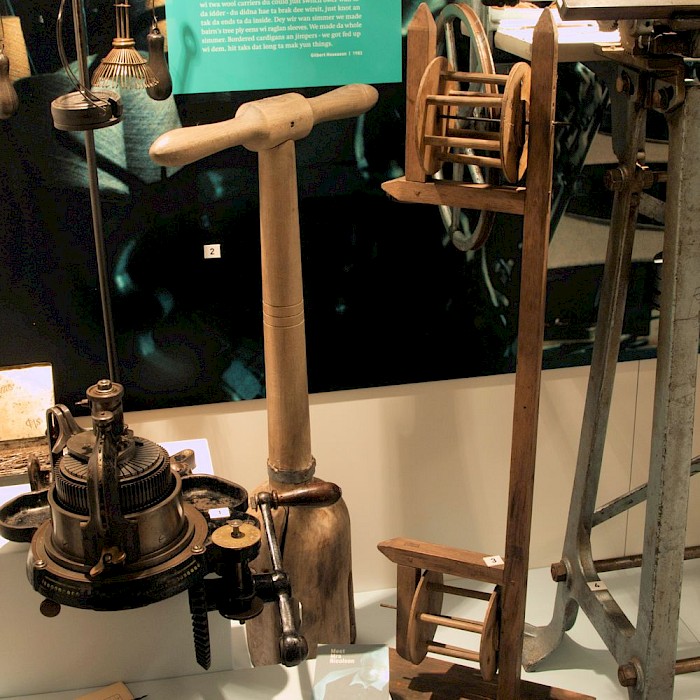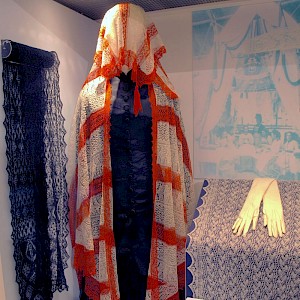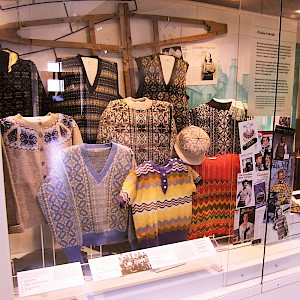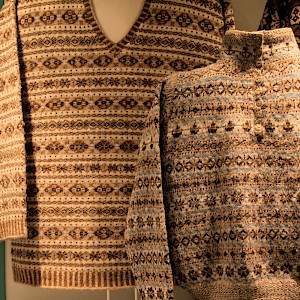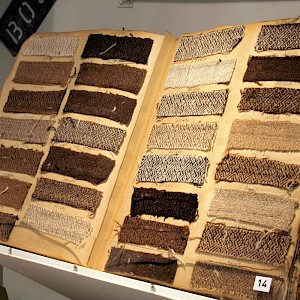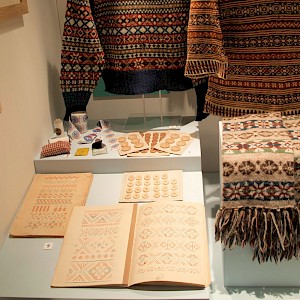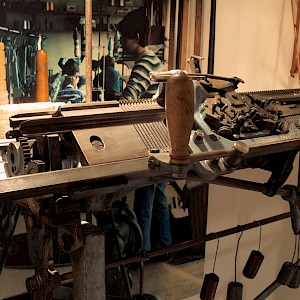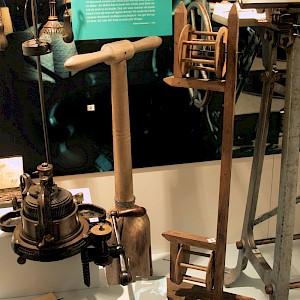Textiles
Shetland is internationally renowned for its textiles and this zone follows developments from a barter system to a world-wide industry that has experienced many highs and lows.
Earnings from knitting oiled the Shetland economy, although merchants made the cash, not the women who produced it. Shetland textiles have been most successful when the outside world wanted them, and the industry has to cope nowadays with cheaper mass-produced alternatives. While the islands’ prestigious weaving industry could not be saved, knitting is still practised, with knitters forming societies to promote their craft, and an annual celebration of the skills through Shetland Wool Week.
In this section, visitors will learn about the skills needed to produce knitwear, and even try designing a Fair Isle jumper on our electronic interactive screen.
 The Textiles Collection cared for by Shetland Museum and Archives is a Recognised Collection of National Significance in Scotland, having recieved this accolade in 2013.
The Textiles Collection cared for by Shetland Museum and Archives is a Recognised Collection of National Significance in Scotland, having recieved this accolade in 2013.
Themes examined in this zone include: The truck system, fine lace, Fair Isle knitting, and weaving.
Highlights include:
- Great Exhibition shawl – Shetland lace was already a treasured possession of the British gentry when this shawl appeared in the most famous trade exhibition of the age, in 1851 in London.
- Fair Isle fashion – Pull open the display drawers or inspect the cases to see a wide range of Fair Isle patterns and colours.
- Tweed sample book – Firms kept record of their pattern ranges, both to log their work and to help with repeat orders.
- Pattern books, compiled by Robbie Williamson and sold in his Lerwick shop.
- Examples of traditional knitting tools and more contemporary mechanised methods of producing knitwear.
